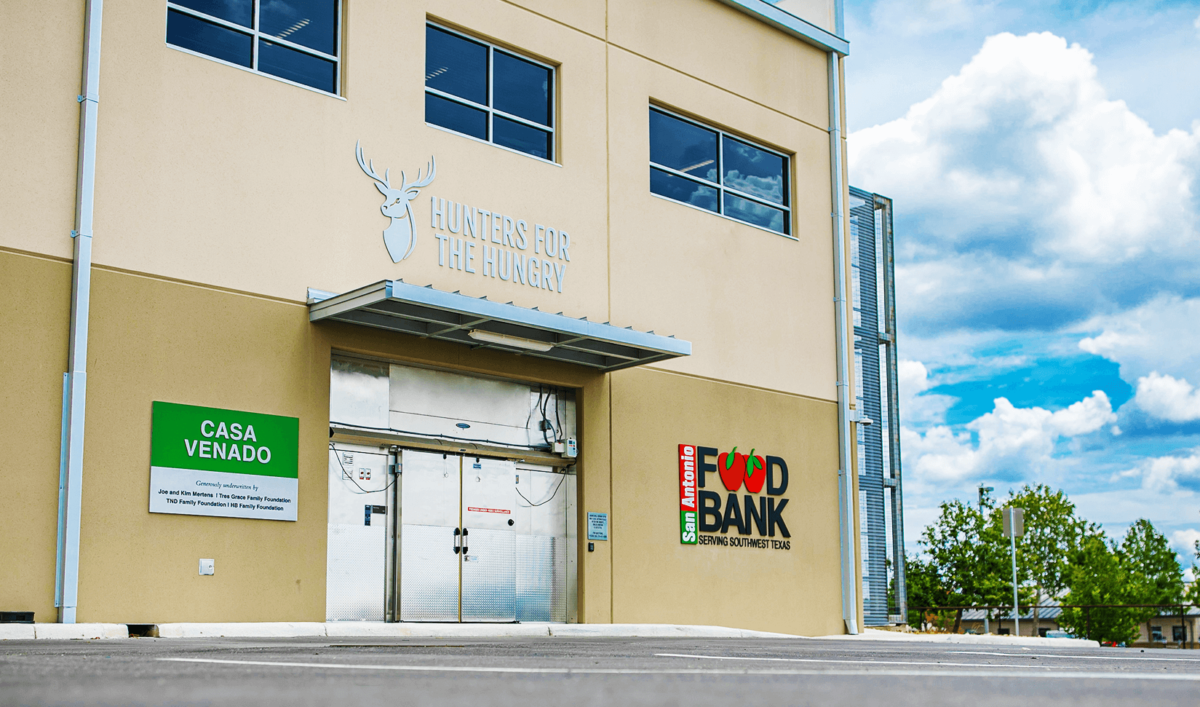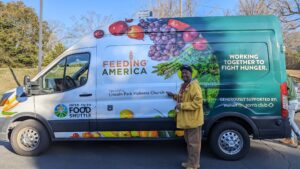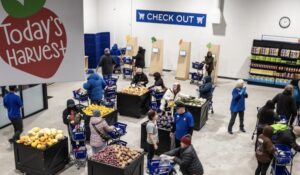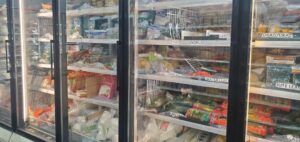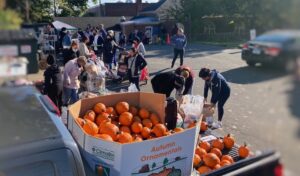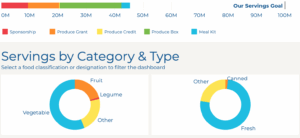There’s no doubt most food banks are spending more money to purchase food these days, though there are a handful outliers that spend virtually nothing on food.
During Covid, almost all food banks began purchasing more food when donated goods were tough to come by, and government funding and donated cash were in plentiful supply. Since Covid, purchasing budgets have remained elevated, as food banks seek to meet continued high demand in the face of less government support.

Some food banks, however, don’t see purchasing food as a sustainable activity and have refrained from it. In their view, a strict focus on donated food allows them to source greater volumes of food than if they were purchasing it. These food banks may also face geographic or economic constraints that sharpen the need to focus only on donated food.
El Pasoans Fighting Hunger Food Bank is one of those food banks. Located in far West Texas near the border of Mexico, the food bank does not benefit from any nearby agriculture, with the surrounding land growing only a particular type of cotton (that also happens to grow in Egypt) and expensive pecans. Nor are there any grocery store distribution warehouses in its vicinity.
At the same time, the need in El Paso is very high, with 35% of El Pasoans facing food insecurity, according to a survey from University of Texas at El Paso, released in May. “We are in a low-resource, high-need area,” said Tom Cihonski, the food bank’s Chief Operating Officer.
The result is that the food bank stretches its dollar as much as it can. For $100,000, for example, the food bank could purchase four truckloads of rice and have it delivered, or it could find 20 truckloads of donated rice and use the $100,000 to transport it all.
Getting more truckloads is the obvious answer for Cihonski. “We could have a purchasing budget, but we would serve a lot less people,” Cihonski said. “And the need here in El Paso is such that we cannot justify doing that.”
In addition to working closely with its fellow food banks to source surplus food, El Pasoans has done a few things internally to expand its ability to take in more donated food. For one, it has invested in an “over the road” trucking fleet, which enables drivers to travel longer distances without having to do hotel stays. Currently, 17 such trucks are on the road, Cihonski said.
El Pasoans also is investing in three new clean rooms, to add to three it already has. The tightly controlled spaces allow the food bank to take in and process food that other food banks might not want – like large volumes of frozen meat or pasta, or 2,000-pound boxes of bulk beans.
It will cost about $2.5 million to construct the clean rooms and another $2.5 million-plus to automate them with high-speed processing and other equipment. In addition, the rooms will be staffed with eight to ten full-time employees. “Once you put the automation in, you cannot run those with volunteers,” Cihonski noted.
All that investment is in line with the food bank’s high-donation model. “It means taking less desirable foods and investing in the resources to take food that is harder to work with,” Cihonski said.

San Antonio Food Bank is also focused on acquiring only donated food. Its goal this year is to source 80 million pounds of food, which compares to a high of 91 million pounds acquired during the peak of Covid, a time when it also had the benefit of $27 million in government aid. “It’s a very high goal,” said Chad Chittenden, Director of Food Industry Partnerships.
Purchased food is not part of the equation. “This food bank has never truly had a purchase budget for general use products,” Chittenden said. “The philosophy is that it’s not sustainable to fundraise to spend money on food.”
San Antonio Food Bank’s three-person sourcing team includes one focused on government relationships, manufacturers and wholesalers; another focused on retail partners, and another dedicated to produce. The food bank benefits from a year round growing season, which means it doesn’t need to rely much on Feeding Texas’ Collaborative for Fresh Produce, one of seven Feeding America collaboratives that sends produce that would otherwise go to waste to food banks. “We do a lot of our own sourcing, so we don’t really use CFP,” Chittenden noted.
For additional protein, the food bank has invested in an advanced processing facility for deer and venison. Its Hunters for the Hungry program invites local hunters, processors and landowners to drop off their wild game at the food bank’s Casa Venado (Deer House) or to one of about 25 participating meat processors. If necessary, the food bank also provides donors a refrigerated trailer free of charge.
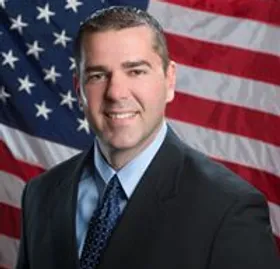
These Texas food banks are not alone in their strategy of emphasizing donated food. In Florida, the independent food bank Farm Share never purchased any food until the pandemic, when it was given government money to do so. Now that the federal money has dried up, Farm Share is finding it has to readjust the expectations of food donors that have grown accustomed to receiving payments. “A new market has been created for food banks to buy food directly,” said Stephen Shelley, CEO. “It has changed the landscape a lot.”
With the state of Florida now providing money for food banks to buy directly from Florida growers and producers, Farm Share is looking to spend the money a bit more shrewdly. It will offer to buy one truckload if the producer donates two or three truckloads, for example. “We don’t want to shoot ourselves in the foot by creating a market in which we’re buying more than we’re getting donated,” Shelley noted.
Midwest Food Bank also emphasizes donated food in its sourcing. One way it keeps costs down is by utilizing volunteer truck drivers who have commercial driver licenses. Eric Hodel, CEO, estimated that the food bank has more than 100 volunteer truck drivers. A local trucking company also hauls food on a volunteer basis when the truckers are heading back to their headquarters, which is located near one of Midwest’s major warehouses. An added bonus is that the values of the trucking company – faith and family – are well-aligned with those of the food bank, Hodel noted.
For many food banks, a purchasing budget lets them buy food that may be more nutritious or culturally appropriate than what gets donated, as Food Bank News wrote about here. El Pasoans Fighting Hunger bolsters nutrition by deploying its TEFAP allotment entirely to beans and brown rice, a complete protein that is highly culturally appropriate in its area. “Without those USDA resources, that donation model by itself would not work to give an adequate diet to people,” Cihonski said. “It’s an absolutely critical piece of what we have.”
Also critical are El Pasoan’s relationships with other food banks that understand its needs. “El Paso has a lot of friends across the country,” Cihonski said. “Without all those close friendships and people helping us, this would be a lot more difficult.” – Chris Costanzo
PHOTO TOP: Casa Venado is San Antonio Food Bank’s wild game processing facility.
Like what you’re reading?
Support Food Bank News
